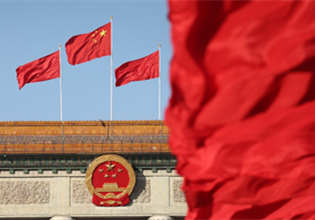Inner Mongolia boosts energy conservation, cuts emissions
North China's Inner Mongolia autonomous region recently issued a plan to implement 10 key energy conservation and emissions reduction projects during the 14th Five-Year Plan period (2021-25).
Under the plan, by 2025, the energy consumption per unit of GDP in Inner Mongolia will drop by 15 percent compared with that in 2020.
In addition, the total emissions from chemicals oxygen demand, ammonia nitrogen, nitrogen oxides and volatile organic compounds will drop respectively by 8 percent, 8 percent, 10 percent and 10 percent based on 2020 levels.
To achieve those targets, plans are for Inner Mongolia to promote energy-saving measures and in-depth treatment of pollutants in industries with high energy consumption and high emissions. These include the chemicals industry, the iron and steel sector, as well as the non-ferrous metals, building materials, coking and the coal chemicals industries.
At the same time, the region will guide manufacturing enterprises to resettle in industrial parks, promote the overall optimization of the energy system and comprehensive pollution controls of industrial parks – as well as encourage industrial enterprises and industrial parks to prioritize the use of renewable energy.
Furthermore, Inner Mongolia will carry out the construction of demonstration projects – such as ultra-low energy consumption buildings, near zero energy consumption buildings and zero carbon buildings – to promote the energy-saving renovation of existing buildings.
Moreover, it will improve its infrastructure – including charging piles, gas and hydrogenation stations – and implement clean energy replacements.
In addition, Inner Mongolia will control the growth of coal consumption, focus on the clean and efficient utilization of coal and steadily promote coal-saving and the consumption-reducing transformation of coal-fired power units.
Plans are for the region to speed up the construction of an environmental infrastructure system that integrates sewage, garbage, solid waste, hazardous waste, medical waste treatment, disposals and monitoring – in a bid to improve the level of recycling and resource utilization of recyclables.



 Print
Print Mail
Mail





